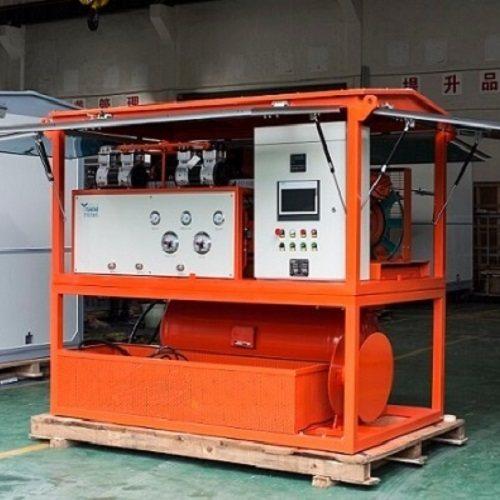SF6 gas, known for its excellent insulating and arc-quenching properties, plays a vital role in various electrical equipment like transformers, circuit breakers, and switchgear. However, ensuring optimal performance and equipment longevity requires precise and equipment-specific SF6 gas filling procedures.
This article explores the nuances of SF6 gas filling procedures across different equipment types, highlighting the importance of tailoring the approach to achieve the best results.
Understanding Equipment Variations
Electrical equipment utilizes SF6 gas in varying capacities and configurations. Here's a breakdown of key considerations for different equipment types:
Circuit Breakers: Circuit breakers typically require a two-stage filling process. The first stage involves purging the chamber with dry air or nitrogen to remove contaminants. The second stage involves filling the chamber with SF6 gas to the specified pressure, ensuring proper gas pressure and density for effective arc interruption.
Power Transformers: Transformers involve a more complex filling process due to their larger size and internal compartments. Dehydration units are often employed to remove moisture from the transformer's internal insulation system before SF6 gas filling commences. The filling process itself might involve multiple filling points and pressure monitoring at various locations within the transformer.
Switchgear: Switchgear, encompassing various insulated switching devices, requires a filling approach that considers the specific design and gas volume requirements of each component. Multi-stage filling with pressure balancing between compartments might be necessary to ensure proper gas distribution and pressure throughout the switchgear.
Tailoring the Filling Process
Optimizing the SF6 gas filling procedure involves several key factors:
Pressure and Volume Requirements: Each equipment type has specific pressure and gas volume requirements for optimal performance. The filling process needs to be precisely controlled to achieve these parameters.
Gas Purity and Dehydration: Moisture and contaminants in the SF6 gas can compromise its insulating properties. Utilizing proper dehydration equipment and ensuring gas purity is crucial for long-term equipment health.
Filling Sequence and Equipment Configuration: The filling sequence and equipment configuration (number of filling points, pressure monitoring locations) need to be tailored to the specific equipment being filled.
Benefits of Optimized Filling
Following equipment-specific SF6 gas filling procedures offers numerous advantages:
Enhanced Equipment Performance: Precise filling ensures optimal pressure and gas quality, leading to efficient operation and reliable arc quenching within the equipment.
Extended Equipment Life: Proper filling practices minimize moisture and contaminant ingress, promoting insulation integrity and extending the lifespan of electrical equipment.
Improved Safety: Correct gas pressure and the absence of contaminants contribute to safer operation of electrical equipment by reducing the risk of arcing faults.
Conclusion
SF6 gas filling is a critical step in ensuring the proper functioning and longevity of electrical equipment. By understanding the variations in equipment design and tailoring the filling process accordingly, electrical professionals can achieve optimal performance, safety, and extended equipment life.

